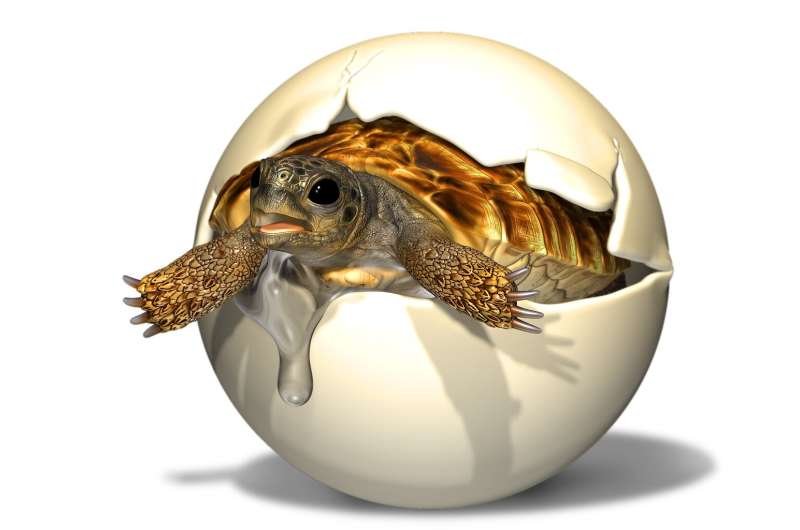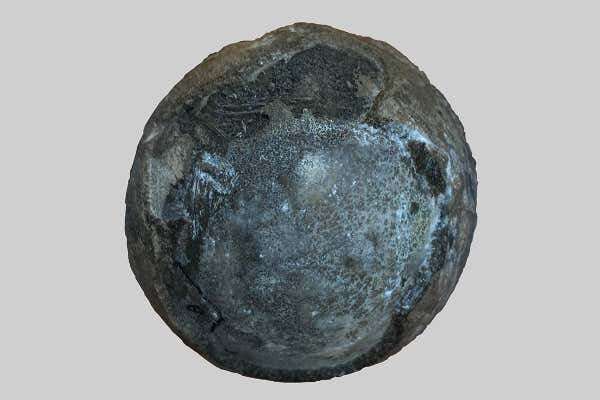August 18, 2021 report
Thick-shelled turtle egg with embryo still inside from the Cretaceous period found in China

A team of researchers affiliated with several institutions in China and Canada has identified a turtle egg fossil from the Cretaceous period that contains an embryo. In their paper published in Proceedings of the Royal Society B, the group describes where the egg was found and what they learned about it during their examination.
Finding the eggs of dinosaurs or turtles from the Cretaceous period is extremely rare—their fragile nature makes it difficult for them to survive to the present, even in prime conditions. Finding a fossilized embryo still inside such an egg is even more rare. But that is just what the team in China discovered when they visited a farmer in China's Henan Province. He had inadvertently dug up what he had described as several strange-looking rocks. One of those rocks turned out to be a turtle egg that the team dated to a time during the Cretaceous period, somewhere between 66 and 145 million years ago.
In studying the egg using a variety of techniques, including micro-computed tomography, the researchers were able to see that the egg was from a turtle that had belonged to a group known as nanhsiungchelyids—a land-dwelling species wiped out by the same impact that wiped out the dinosaurs. Prior research has shown that they were all quite large. The specimen that had laid the egg found by the farmer likely had a shell diameter of up to a meter and a half. To learn more about its characteristics, the researchers recreated the embryo with a 3D software application. In so doing, they found flat ribs that are characteristic of modern baby turtles. As the turtle grows, they form the basis of the shell. The researchers suggest that the ancient turtle likely was not much different from modern turtles, with one exception—an extremely thick eggshell.

As a rule, eggshells are pretty thin, whether from birds or turtles. This is because the little creature growing inside must at some point break its way out. With a shell nearly two millimeters thick, the baby inside the ancient egg would have required some special abilities to make its way into the world.
More information: Yuzheng Ke et al, A large and unusually thick-shelled turtle egg with embryonic remains from the Upper Cretaceous of China, Proceedings of the Royal Society B: Biological Sciences (2021). DOI: 10.1098/rspb.2021.1239
Journal information: Proceedings of the Royal Society B
© 2021 Science X Network





















